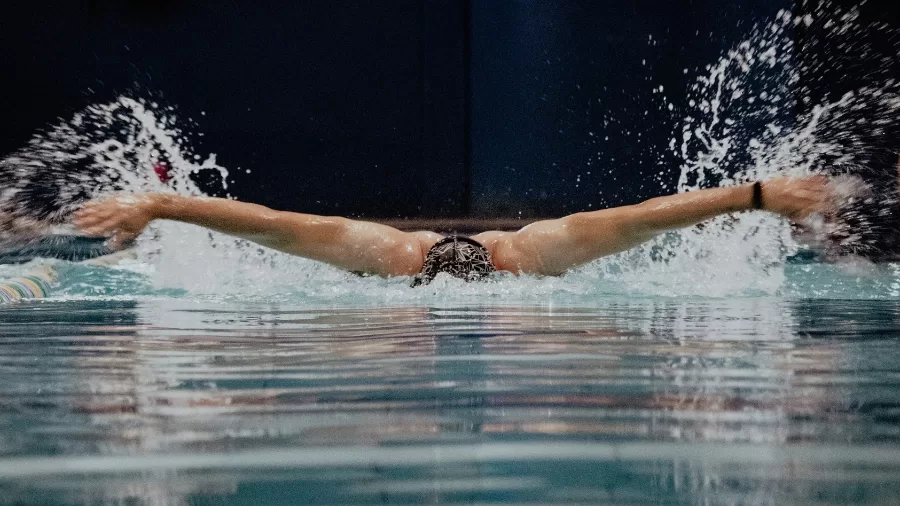Travel
The Joy of Slow Swimming: The Latest Trend in Relaxing Getaways

- A slow swimming holiday creates a mindful travel experience centred on relaxation and regeneration. It allows travellers to reconnect with nature and slow down.
- The new alternative to fast-paced traditional vacations, slow swimming, is gaining popularity at far-flung water destinations that boast peaceful waters and eco-friendly activities.
In an era when everything encourages the rapid and frantic, a new travel trend, slowly working its way into the limelight, is slow swimming holidays. These calming trips urge the traveller to enter the water at a contemplative pace for a reconnection with nature away from the chaotic stresses of modern-day life. From quiet hideaways along the coast to very serene swims in lakes, the slow swim is favoured more by mindful travel seekers aiming to replenish their souls and bodies.
What Is Slow Swimming?
It is not just a matter of enjoying the water but some altogether different way of experiencing travel. Contrary to competitive swimming, which is about speed and endurance, slow swimming celebrates the journey. While slowly moving through the water, it encourages its practitioners to enjoy the rhythm of it, appreciate the natural surroundings, and allow the whole experience to develop at their own comfortable pace. It is a form of meditation in water: an adventure-cum-relaxation-cum-enlightenment.
The slow swimming trend appears to borrow some aspects from wild swimming and cold-water therapy, to which health benefits have been attributed. Slow swimming is marketed differently, perhaps as a meditative form of immersion. Instead of aiming for a distance or completion time, you immerse yourself in the water while floating and paddling at an unhurried pace—a close-to-walking experience. Given the slow pace of swimming and the ability of the swimmer to feel the environment, there are therapeutic effects from this kind of swimming.
Slow Swimming Holidays: Their Attraction
Slow swimming holidays began emerging in reaction to various desires for mindful travel experiences. As those willing to disconnect more and more from technology and busy, matte, and disappointing lives are partially sedated into the present with such travel opportunities, whether through some secret sandy cove or swimming gently across a clear glacial lake, those experiences give way for the travellers to wrap up mentally and physically. It is this slow-pacing, very nourishing reflection compared to the swallow jet-setting of modern life.
Popularity-wise, another thing enhancing slow swimming in the modern era is its vast array of health benefits and therapeutic outcomes. Healing is reputed to occur while swimming. Slowed down even more, swimming promotes maximum rejuvenation. Gentle moving through water discharges stress, augments circulation, and brings tranquillity. Swimming in lakes, rivers, seas, etc., has well-documented physical and psychogenic benefits. Common assertions are that exposure to nature strengthens the immune system, helping and healing broadly in a natural way.
How Slow Swimming Travels Sustainably
In many respects, slow swimming has become the darling of the eco-conscious tourist on the lookout for sustainable travel experiences. These experiences are distinguished from motorised water sports, which are often damaging to the environment; slow swimming, we argue, has minimal impact on the environment. Hence, an ideal eco-way to experience the running waters of this world. In other words, for those hoping to enjoy nature without causing her any harm, slow swimming provides a much-needed avenue. This growing emphasis on sustainability has fuelled ecotourism, with slow swimming being a natural way to experience Mother Nature while fostering her preservation.
An Approach for Relaxation from Traditional Holidays
For people desiring an escape from the relentless pace of traditional holidays, slow swimming presents a refreshing alternative. Most holidays are busy schedules bustling with activities, but slow swimming invites a gentler approach. Rather than racing from one tourist attraction to another, swimmers can pause and look at the beauty surrounding them. Whether in a remote river or a glittering lagoon, the slow swimming experience invites basking in the now rather than hurrying through it.
Destinations Best Suited for Slow Swimming Holidays
Dispersed around the globe and attracting hordes for slow swimming holidays, these havens each offer different experiences for nature lovers who want slow-paced immersion into the great outdoors. The Lake District in the UK provides stunning scenery amid calm water for slow swimming. Renowned locations such as Buttermere and Ullswater provide the ambience for peacefully drifting through calm waters in and out of rolling hills.
Another perfectly stunning slow swimming setting in the Highlands of Scotland would include lochs such as Loch Lomond or the Fairy Pools, Isle of Skye; alternatively, the Ionian Islands in Greece provide pristine swimming spots well-known for lazy swimming, with their tranquil coasts of Corfu and Kefalonia being mostly explored by slow swimmers.
As for Portugal’s Algarve, located among bold cliffs and the caress of pristine beaches, they must also suit slow swimming very well. Swimmers might enter sea caves, view rock formations, and ride on the tender waves of the Atlantic Ocean. Likewise, although some areas might restrict swimming, Croatia’s Plitvice Lakes National Park is one of the best alternatives for swimming in breathtaking natural pools and nearby rivers that flow slowly.
Tips for Remaining Safe on a Slow Swimming Holiday
Quite a few pointers are handy to keep in mind for the slow swimmer’s holiday: safety and enjoyment. The first is water safety. General swimming conditions need to be checked before swimming, and the area chosen should have mainly low hazards: wild swimming spots, calm lakes, and sheltered bays. On occasion, the wearing of certain pieces of gear, such as wetsuits or swim shoes, may contribute to maximum comfort in colder or rocky venues.
Though slow swimming might be considered a solitary pursuit, much enjoyment and safety can come from swimming in a group or on a guided swimming tour. An experienced guide on these tours will ensure participants are properly prepared and safe during the entire experience. Tours also offer the opportunity to meet fellow-minded souls so that their travails will be even more enjoyable.
Nature respect is paramount to the ethos of slow swim. Participants should never disturb wildlife, follow local legislation, and protect the environment. Finally, doing it slowly entails allowing oneself to pause and appreciate the moment! Don’t hurry. Float, breathe in, and enjoy the magnificent beauty all around you. The slower the rhythm, the more one can bond with the water and the world outside.
Slowing Down to Retrace Steps with Nature
To summarise, leisurely swimming holidays provide a unique and enjoyable kind of water travel. By emphasising mindfulness, well-being, and sustainability, such vacations offer a purposeful alternative to the hectic pace of typical vacations. Swimming in a calm UK lake or moderate swimming in Greece deepens the connection to nature while allowing the spirit to relax and revitalise. So why not just dive in and enjoy moving through the water at your own pace? Slow swimming vacations can be a fantastic way to reconnect with both oneself and the outside world.

















































